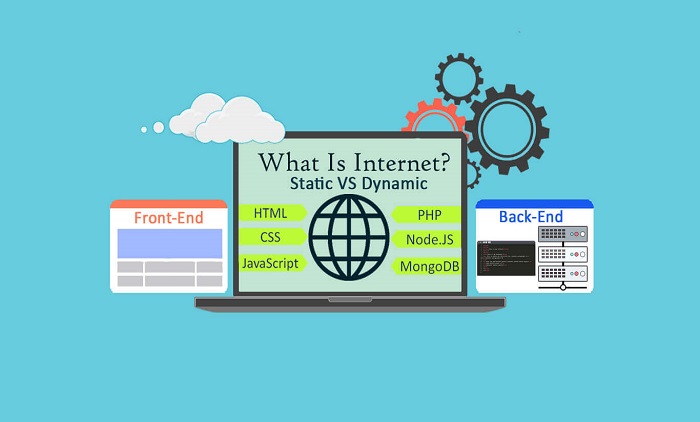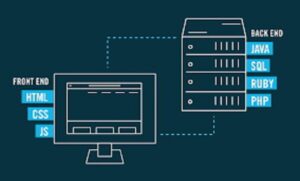Front end and back end are terms used by programmers and computer professionals to describe the layers that make up hardware, a computer program or a website which are delineated based on how accessible they are to a user. In this context, the user refers to an entity that could be human or digital.
The back end refers to parts of a computer application or a program’s code that allow it to operate and that cannot be accessed by a user. Most data and operating syntax are stored and accessed in the back end of a computer system. Typically the code is comprised of one or more programming languages. The back end is also called the data access layer of software or hardware and includes any functionality that needs to be accessed and navigated to by digital means.
The layer above the back end is the front end and it includes all software or hardware that is part of a user interface. Human or digital users interact directly with various aspects of the front end of a program, including user-entered data, buttons, programs, websites and other features. Most of these features are designed by user experience (UX) professionals to be accessible, pleasant and easy to use.
A back-end application or program supports front-end user services, and interfaces with any required resources. The back-end application may interact directly with the front end or it may be called from an intermediate program that mediates front-end and back-end activities.
Purpose of front end and back end
System architectures are broken down into front end and back end components for a variety of purposes. The most common is in software and web development to break down projects in terms of required skills. The front end aspect of a project is usually handled by professionals such as web designers while the back end is handled by engineers and developers.
Front end and back end can also be used to describe situations where the customer has access to one view and employees have access to another. Front end components are customer facing while rights to the back end are exclusively for authenticated users.
Examples of front end and back end
Concepts and components that focus on the front end of a system include:
Design and markup languages like HTML, CSS and JavaScript.
Search engine optimization (SEO).
Usability and accessibility testing.
Graphic design and image editing tools.
Web performance and browser compatibility.
Inversely, those that focus on the back end of a system include:
Programming and scripting languages like PHP, Python and C#.
Automated testing frameworks.
Network scalability and availability.
Database management and data transformation.
Cybersecurity and data backup practices.







Leave a Reply